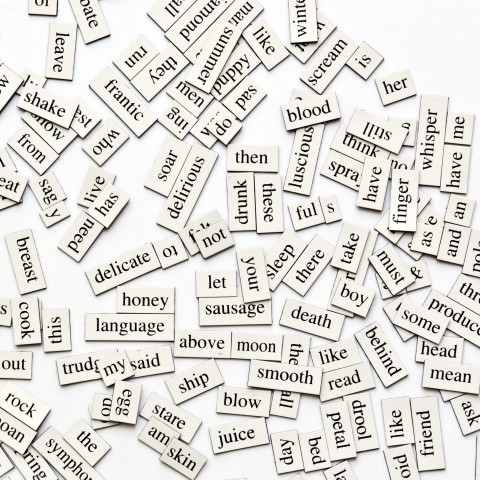
Learning a new language can be tricky; there’s so much to learn. Where should you start? And what should you focus on?
You may already be learning grammar rules, memorizing conjugation tables, and studying vocabulary lists. However, to really learn Dutch, it’s important that you speak it as early as you can. That’s the only way you’ll really improve your Dutch language skills.
Are you still hesitant to speak Dutch? Then try to learn some useful and easy Dutch sentence patterns. This will allow you to form hundreds of natural sentences that you can use in many daily situations. You’ll be able to communicate your thoughts, doubts, or opinions to your Dutch friends or colleagues with ease and confidence. Sure, it won’t enable you to express the most complicated lines of thought, but it will cover a wide range of typical day-to-day interactions. Moreover, it will give you the confidence boost you need to start speaking Dutch.
In this article, you’ll learn ten easy Dutch sentence patterns, covering situations from giving a description to expressing your desires. For each of these Dutch-to-English sentence patterns, we’ll include many examples. This way you’ll really have the tools to master the Dutch sentence structure and sentence patterns.
Good luck!
 Table of Contents
Table of Contents
- Linking Two Nouns
- Using Adjectives to Describe Something
- Making a Comparison
- Expressing Your Desires
- Expressing Your Needs
- Expressing Your Preferences
- Giving Orders
- Asking for Information
- Asking About Time
- Asking About Location or Position
- How DutchPod101.com Can Help You Learn More Dutch
1. Linking Two Nouns

We’ll start with an easy Dutch sentence pattern that will allow you to link two nouns: the “A is B” pattern.
This can also be called the [A] [B] [C] pattern: A (noun/subject) + B (verb) + C (noun/object).
A noun (subject) is linked by a verb to a noun (object), giving substance to a sentence. The way to do this is to use the verb zijn (“to be”). You can find details about its conjugation right here.
Let’s have a look at some examples:
- Jan is mijn vriend. (“Jan is my friend.”)
- Charlotte was mijn baas. (“Charlotte was my boss.”)
- Mijn broer is politieagent. (“My brother is a police officer.”)
- Dit horloge is een cadeau van mijn vrouw geweest. (“This watch was a gift from my wife.”)
- Nederland is het land van mijn dromen. (“The Netherlands is the country of my dreams.”)
- → Would you like to learn some more nouns? Have a look at these 50 Most Common Nouns.
2. Using Adjectives to Describe Something
Okay, let’s continue with another basic Dutch sentence structure, similar to the one above. This sentence pattern has the same kind of structure (A is B). However, the verb zijn (“to be”) here doesn’t connect two nouns; instead, it connects a noun and an adjective.
So the pattern is: A (noun/subject) is B (adjective).
Let’s look at some examples:
- Marlies is mooi. (“Marlies is beautiful.”)
- Kai is heel jong. (“Kai is very young.”)
- Deze baan was erg belangrijk voor mij. (“This job was very important to me.”)
- Hij zou nu erg oud zijn geweest. (“He would have been very old now.”)
- De film die we gisteravond hebben bekeken was eng. (“The movie we watched last night was scary.”)
- → Learn more useful adjectives with DutchPod101’s list of the 50 Most Common Adjectives. Or have a look at “Which Adjective Describes Your Personality Best?”
3. Making a Comparison

Let’s take it one step further with this more complex (but still easy) Dutch sentence pattern: A is [adjective] than B.
Use this sentence pattern to make a comparison.
Let’s have a look at the different parts of this sentence pattern, that again is connected by the verb zijn (“to be”): A (noun/subject) + zijn (“to be”) + B (adjective in comparative form) + dan (“than”) + C (noun).
Let’s now see some examples of how to form Dutch sentences like this with the verb zijn:
- Ik ben mooier dan mijn zus. (“I am more beautiful than my sister.”)
- Mijn man was slimmer dan ik. (“My husband was smarter than me.”)
- Hij is grappiger dan mijn vader. (“He’s funnier than my dad.”)
- Nederland is leuker dan België. (“The Netherlands is nicer than Belgium.”)
- De vorige minister-president was beter dan de huidige. (“The previous prime minister was better than the current one.”)
However, you can also make comparisons with other verbs. For example:
- Mijn kat rent harder dan mijn hond. (“My cat runs faster than my dog.”)
- Hij loopt beter dan ik. (“He walks better than me.”)
- Deze achtbaan ging sneller dan de vorige. (“This roller coaster went faster than the last one.”)
- In Amsterdam praten ze duidelijker dan in Limburg. (“In Amsterdam, they talk more clearly than in Limburg.”)
4. Expressing Your Desires
Now let’s go another way and see a different kind of Dutch sentence structure.
Wouldn’t it be nice if you could express your desires in Dutch? To be able to say things like “I want to go to the bathroom” or “I want a sandwich with gouda cheese.” Crucial stuff to know in the Netherlands.

For this Dutch sentence pattern, we use the verb willen (“to want”), and it works quite similarly to how it does in English. It uses the indicative mood for something you WANT and the subjunctive mood for something you WOULD LIKE:
- Ik wil (“I want”)
- Ik zou willen (“I would like”)
This sentence structure follows the pattern:
A [object] + willen + B (noun)
or
A [object] + willen + B (noun) + C (verb)
For example:
- Ik wil koffie. (“I want coffee.”)
- Ik wil je zien. (“I want to see you”.)
- Mijn broer wil Nederland bezoeken. (“My brother wants to visit the Netherlands.”)
- Ik zou van de wc gebruik willen maken. (“I would like to use the toilet.”)
- Hij zou graag de hond willen aaien. (“He would like to pet the dog.”)
And let’s not forget “I don’t want,” as the Dutch have no problem at all saying what they don’t want…
- Ik wil geen fruit. (“I don’t want fruit.”)
- Ik zou niet naar Groningen willen verhuizen. (“I would not want to move to Groningen.”)
- → You can find the full conjugation table for willen right here.
5. Expressing Your Needs

Let’s add some urgency and learn one of the most important Dutch sentence structures: how to express your needs. This is something you’re likely to do daily, on a variety of occasions: at work (Ik heb meer tijd nodig – “I need more time”), at home (Ik moet de vaat nog wassen – “I need to wash the dishes”) or with friends (Ik heb echt een biertje nodig – “I really need a beer”).
As you can see in these examples, there are different ways in Dutch to express your needs:
- Moeten (“To have to”)
| Ik moet + Infinitive verb | Ik moet plassen. (“I have to pee.”) |
- Nodig hebben (“To need to”)
| Ik heb + Nominal + nodig | Ik heb jou nodig. (“I need you.”) |
Here are some more Dutch sentence examples:
- Ik heb rust nodig. (“I need to rest.”)
- Ik moet met je praten. (“I need to talk to you.”)
- Ik heb een nieuwe jas nodig. (“I need a new jacket.”)
- We hadden gisteren jouw hulp nodig. (“We needed your help yesterday.”)
- Zij moesten vorige week onverwachts naar Duitsland reizen. (“They had to travel to Germany unexpectedly last week.”)
6. Expressing Your Preferences
You’ve expressed your desires and needs, now it’s time to talk about the things that you like or even love…
Just like in English, we have a verb for “to like” (leuk vinden) and a verb for “to love” (houden van). In general, the Dutch are quite careful with their expressions of love; it’s quickly seen as dramatic or overdone to use this word. However, if you really like something or someone, you can use it, of course.

- Leuk vinden (“To like [to]”)
| Ik vind + Nominal + leuk | Ik vind mijn collega leuk. (“I like my colleague.”) |
| Ik vind + Infinitive verb + leuk | Ik vind tekenen leuk. (“I like to draw.”) |
- Houden van (“To love [to]”)
| Ik houd van + Nominal or Noun | Ik houd van jou. (“I love you.”) |
| Ik houd van + Infinitive verb | Ik houd van fietsen. (“I love to bike.”) |
Let’s have a look at some examples:
- Ik vind deze film leuk. (“I like this movie.”)
- Ik vind je leuk. ( “I like you.”)
- Mijn vader houdt veel van mijn moeder. (“My father loves my mother a lot.”)
- De kinderen hielden vroeger van buiten spelen. (“In the past, the children loved playing outside.”)
- Ik vind bier lekker, maar ik houd meer van wijn. (“I like beer, but I prefer wine.” Literally: “I love wine more.”)
7. Giving Orders
Would you like to get bossy in Dutch? Or just be able to express your limits? Then you need this sentence pattern with the Dutch imperative. For this, we use the present tense of the first person singular. However, in the case of regular verbs, the imperative is the verb stem.
This is the sentence pattern: A (imperative verb) + niet (+ B [noun]). In English, this means: Don’t + A (conjugated verb).
Let’s see this Dutch sentence construction in action:
- Ga niet weg! (“Don’t go away!”)
- Lach niet. (“Don’t laugh.”)
- Wees niet onbeleefd. (“Don’t be rude.”)
- Vertel me niet wat ik moet doen. (“Don’t tell me what to do.”)
- Doe de deur niet dicht. (“Don’t close the door.”)
- → When you’re angry, it’s always good to know how to give negative orders. However, you should also look at these Phrases to Use When You’re Angry.
8. Asking for Information

Let’s now move on to some questions. Especially as a foreigner, it’s so important to be able to ask basic questions; you need to know how to ask for information. So what’s an easy way to do this in Dutch?
- Wat + zijn + A (noun)? (“What + to be + A [noun]?”)
As you can see, it’s quite similar to its English counterpart. Let’s see a few examples of this Dutch language sentence structure:
- Wat is dat? (“What is this?”)
- Wat is jouw naam? (“What is your name?”)
- Wat was haar beroep? (“What was her profession?”)
- Wat was het gerecht dat we de vorige keer aten? (“What was the dish we ate last time?”)
- Wat zou je ideale feest zijn geweest? (“What would have been your ideal party?”)
In the sentences above, note the conjugation of the verb zijn (“to be”).
9. Asking About Time
After the “what” questions, it’s time to look at the “when” questions:
- Wanneer + zijn + A (noun)? (“When + to be + A [noun]?”)
This Dutch sentence pattern is also quite similar to the English version. The zijn (“to be”) conjugation is also crucial for this question. Let’s see some examples:
- Wanneer is je verjaardag? (“When is your birthday?”)
- Wanneer is de vergadering? (“When is the meeting?”)
- Wanneer was jouw feest? (“When was your party?”)
- Wanneer was je boos op je zus? (“When were you angry with your sister?”)
- Wanneer zou jouw trein aankomen? (“When would your train arrive?”)
- → Would you like to learn more about the vocabulary for the days in Dutch? Have a look at this useful vocabulary list on Talking About Days with audio recordings.
10. Asking About Location or Position
Last, but definitely not least, a very useful Dutch sentence pattern is that for asking “where” questions.
These are crucial for when you get lost and need to ask for directions, or when you just want to socialize with someone and ask them where in the Netherlands they’re from:
- Waar + zijn + A (noun)? (“Where + to be + A [noun]?”)
This question can also use different conjugations of the verb zijn (“to be”):
- Waar is dat? (“Where is that?”)
- Waar is de wc? (“Where is the toilet?”)
- Waar was ik gebleven? (“Where was I?”)
- Waar ben jij geboren? (“Where were you born?”)
- Waar ben jij het liefste op jouw verjaardag? (“Where do you prefer to be on your birthday?”)
- → Want to see more Dutch-to-English sentence patterns? Make sure to visit our vocabulary list on the Top 10 Sentence Patterns for Beginners, with useful audio recordings to improve your pronunciation.
11. How DutchPod101.com Can Help You Learn More Dutch

You’ve just learned the top ten Dutch sentence patterns. You can use these patterns to form sentences for just about any situation!
Are you ready to put this knowledge into practice? Do you feel like speaking in Dutch to complete strangers using these Dutch sentence patterns?
Make sure to explore DutchPod101.com, as we have many free resources that will help you form perfect sentences. Have a look at our vocabulary lists with audio recordings; they’re a great way to practice Dutch words and their pronunciation.
Remember that DutchPod101 also offers personal one-on-one coaching with our premium MyTeacher service. This way, you can practice the Dutch sentence structures with your own private teacher, through interactive exercises, personalized feedback, and much more.
Happy learning!










